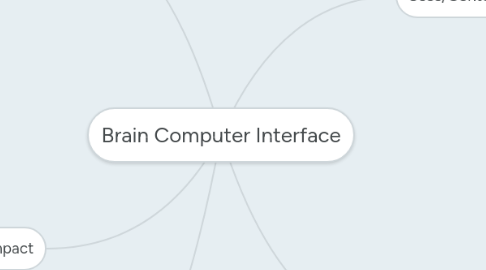Brain Computer Interface
by Kelin Kaardal


1. History
1.1. Phillip Kennedy and colleagues built the first intracortical brain–computer interface by implanting neurotrophic-cone electrodes into monkeys.(1987)
1.2. Nicolelis and his colleagues developed BCIs that decoded brain activity in owl monkeys and used the devices to reproduce monkey movements in robotic arms (1990's)
1.3. Andrew Schwartz at the University of Pittsburgh created a BCI for three-dimensional tracking in virtual reality and also reproduced BCI control in a robotic arm. (2002)
1.4. Tetraplegic Matt Nagle became the first person to control an artificial hand using a BCI (2005)
1.5. Researchers at the University of California, Irvine demonstrated for the first time that it is possible to use BCI technology to restore brain-controlled walking after spinal cord injury (2012-2013)
2. Negative Impact
2.1. Augmented Reality may have a negative impact on user's mental health
2.2. long-term effects unknown
2.3. side-effects - some have reported sleep disturbances
2.4. ethical - e.g who is responsible for questionable or erroneous action within neuroprosthesis
2.5. Privacy issues
2.6. Possibility of mind-reading or mind control
3. Social
3.1. Helping disabilities group to reabuild their body function. e.g. Blind, Color blind, Mute, and Defe
3.2. Super sense for different group of people e.g. Police or Security could having more sensitive divice that connect with brain
3.3. Identity distinguish(New version of ID)
4. Uses/Context
4.1. Comunicación para estudiantes / profesores con discapacidades
4.2. Restoring Cognitive function in students/faculty
4.3. Restoring hearing and sight for student/faculty
4.4. Augmented reality learning
4.5. Drastically shifts the possibilities of how the school body will interact with digital interfaces
4.6. Memories management (store memory or upload memory to privary space and you can replay it anytime)
4.7. Exchanging knowdlege
4.8. Enhancement human sense system e.g. change normal people to four-color viewer
5. Technologies
5.1. Invasive BCI
5.2. Partially Invasive
5.3. Non-Invasive
5.4. EEG (Electroencephalography )
5.4.1. records electric activity of the brain

